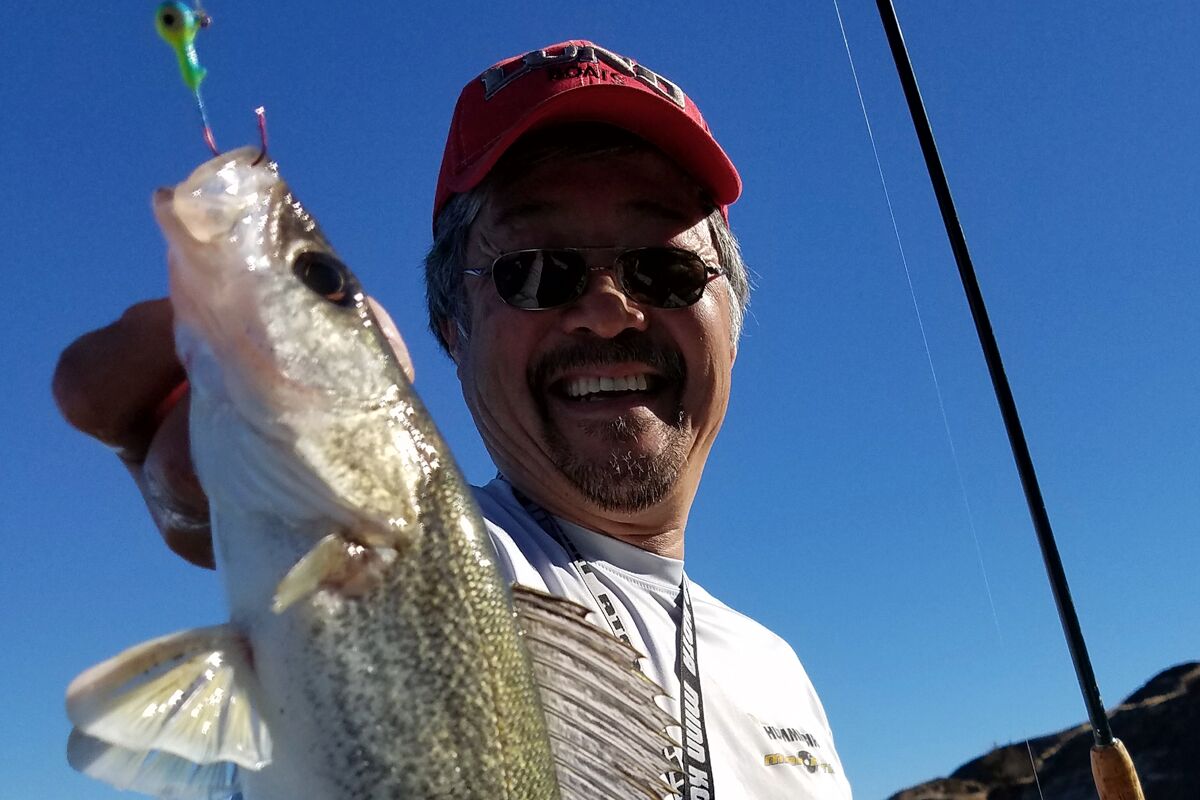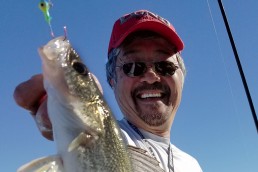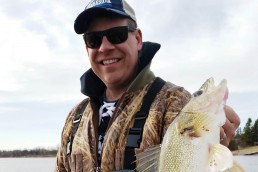Jig Up Spring River Walleyes and Saugers
SHARE THIS POST
Current triggers huge numbers of walleyes and saugers to swim upriver to spawn. Larger than normal schools may be in place on or near traditional spawning sites by the time winter leaves and water temperatures rise to the 40s and 50s.
That doesn’t mean spring fishing is like shooting fish in a barrel. No two days on rivers are alike. Slight changes in temperature and current speed cause fish to move to new locations. Here today, gone tomorrow can be frustrating. Cold fronts arrive routinely and even if you’re on fish, the weather can turn walleyes and saugers off in a heartbeat. Water clarity can go downhill fast in an early-spring rainstorm.
Still, rivers can and must be mastered. The Mississippi River, the Missouri River system, the Illinois River and others play host to both walleyes and saugers, which thrive in moving water. Some spend their entire lives in rivers. Others that inhabit natural lakes and reservoirs play out important parts of their life cycles in rivers and streams.
Tactics used to attack rivers have evolved over time. When fish are actively pursuing forage, trolling with lead-core or three-way rigs can put lots of walleyes and saugers in the net.
But, jigs are still the tried and true method when fish are neutral or negative, which they often are after a cold front moves through. Jigs are also the technique of choice when they’re crowded together on smaller structural elements. Jigs are also the choice when debris, like leaves that foul hooks, make trolling impossible.
A jig’s adaptability explains why most anglers—including stars like Al Lindner—say jigs are the one thing in their tackle boxes they can’t do without.
Although basically the same, jigs have evolved since anglers made the first one by crimping split shot on a hook. Early breakthroughs involved adding color and hair or plastic.
Weight is the key element to fishing jigs in moving water. You must have the right weight to meet conditions of current and wind to stay on the bottom below the boat.
Smaller is better in some places. A Professional Walleye Trail tournament was won by fishing in 4-feet of water on the Mississippi River at Red Wing, Minn. Water was dingy and walleyes were crowded on a rocky and sandy inside turn in this shallow water. Small jigs, usually 1/8-ounce, caught fish directly below the boat without spooking them.
On the Detroit River, one ounce is sometimes not enough to stay on the bottom where the fish live. Ted once used a simple 3/8-ounce Fuzz-E-Grub jig to win the 1998 PWT Championship on the Missouri River.

Are you enjoying this post?
You can be among the first to get the latest info on where to go, what to use and how to use it!
Locations are easy enough to figure out even on unfamiliar rivers. Current concentrates walleyes and saugers in places where water slows. Get a river map and eliminate long straight stretches—fish move through those areas quickly. But, focus on the first bend after those long stretches. Fish hold there to rest. If the bottom is made of sand, gravel, clay or other hard surfaces like clam shells, they may even lay their eggs there. Inside turns, where water slows most, are better than outside bends during the spring. Fish also locate themselves in holes. In addition to natural drops in the bottom contour, look for holes at river bends that barges that cut as they turn.
Slack-water areas known as eddies also form on the upstream and downstream sides of islands, on either side of dams, in front and behind wing dams. The best wing dams are on river bends. Fish might also hold in the limbs of fallen trees or flooded tree roots way back in feeder creeks flowing into the main river. Spots where these tributaries join with the main river also slow current.
Walleyes tend to be shallower than saugers on average. When water rises, both species move to shallower breaklines closer to shore. They also move toward the bank on the face of wingdams or migrate into backwaters and inside marinas to escape strong current. The first current breaks near dams are often good bets when water is high.
One of the most potent jig presentations is slip jigging, or “line chasing” as it’s sometimes called. Thinner braided, high-vis line, in 10-pound test is best. It’s thin enough to cut water resistance and its no-stretch quality allows anglers to sense bites quicker and set the hook faster than monofilament does. The braided line also lets you feel the presence of gravel, sand or mud and locate places where the bottom content changes from one to the other. Fish love those transitions.
Use longer rods with enough backbone like a 6-foot, 10-inch St. Croix Legend Elite LES610MXF to feel the strikes and drive the hook home.
Pick a jig heavy enough to keep the bait directly below the boat. Some pros think the lightest jig they can use and still reach the bottom is best because walleyes and sauger can inhale them better. Others really like to pound the bottom with big jigs to raise a commotion and attract fish. We say try either way and see which one works better to catch fish on that particular river.
Experiment with colors, too. Natural colors are often best in clearer water while contrasting bright colors are often good in dirty or dingy water. If action stops on one color, try other colors before leaving a spot.
Add a fathead minnow or a try a plastic grub body or swim style bait. Sometimes a plastic trailer with a minnow works best when fish want bigger profiled baits.
Boat control in current takes time to learn. Turn the boat into the current or the wind, which ever is stronger, and use short bursts from the electric trolling motor to chase your line as you keep the jig just off the bottom. The goal is to keep the line straight below the boat. Otherwise, you won’t feel a strike. Slip the structure to the end, then run upstream and try another pass at a different depth until you find fish.
We’ve seen times when several boats are slipping the same structure but only one or two boats are catching fish. Their “secret” was having a sonar unit, like a Humminbird with side-imaging sonar, that revealed a feature like a hump or depression or transition from soft to hard bottom that held fish.
MWO
SHARE THIS POST
Did you enjoy this post?
You can be among the first to get the latest info on where to go, what to use and how to use it!
Ted Takasaki
Ted Takasaki is an International Fishing Hall of Fame professional angler who has been featured in many national outdoor magazines and television shows. Takasaki has appeared in front of thousands of angling enthusiasts and is considered one of America’s top walleye and multispecies anglers. Follow him on his Facebook page.




